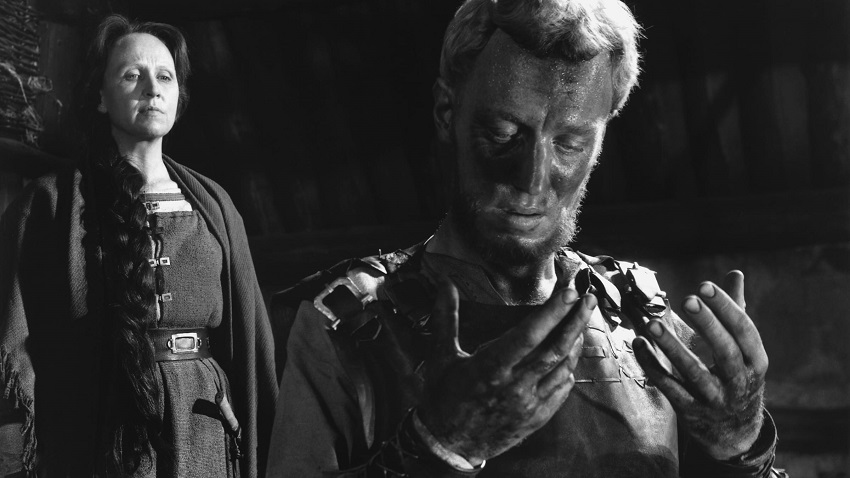
Revenge may be a dish best served cold, but when offered up within movies, it’s usually piping hot. Such is the case with The Virgin Spring, a quiet film that slowly builds to an explosion of violence. Inspired by a thirteenth-century ballad, director Ingmar Bergman and screenwriter Ulla Isaksson expanded a simple story into a stark meditation on vengeance, mercy, and faith.
Set in rural medieval Sweden, the film is focused around the plight of Karin, beloved daughter of Tore (Max Von Sydow) and Mareta (Birgitta Valberg). As the maiden rides to church with the family candles, she meets three brothers who share her lunch and repay her generosity by raping and murdering her. Hours later, the men take shelter with Karin’s parents, who anxiously await her return. Neither parents nor murderers know whom they dine with, but the truth must eventually be learned. When that hour arrives, will vengeance alone ease the parents’ pain?
Bergman was no stranger to portraying spiritual wrestling on film and The Virgin Spring (which directly precedes his “God’s Silence” Trilogy) draws its power from the tension of faithful folk caught between powerful forces. As Peter Cowie notes, the film’s setting is one in which Christianity is slowly replacing ancient Norse beliefs. Bergman uses this larger, societal tension to understand the personal struggles of Tore and Mareta as they contemplate their response to their daughter’s murder. The old ways of violence are set against the new ways of mercy, teachings that the parents embrace and yet cannot keep when the unthinkable happens.
The Virgin Spring was the first full collaboration between Bergman and his longtime cinematographer, Sven Nykvist. It is no wonder, then, that the film makes its deepest impression on a visual level. The black and white images take on a crushing, dream-like intensity. The absence of distracting colors allows for a greater intimacy with the characters while the placing of shadows hints at their inner struggles, dividing their tormented faces between light and dark. When we see Tore’s haggard cheeks dipped in shadow, we sense that we are seeing a fragment of his soul. Also haunting is the use of wide shots to capture his powerful physical presence, while wrestling a sapling to the ground or falling grief-stricken to his knees.
The film stirred controversy upon release. Though graphically tame by today’s standards, its scenes of rape and violence remain emotionally devastating. Bergman’s camera observes distantly, neither leering nor sparing us the horror of the deeds.
Wes Craven later adapted the ballad for his horror film The Last House on the Left (itself remade in 2009). It is a story that keeps being retold on film and yet The Virgin Spring remains the most profound version ever made. Why? Because Bergman guides us through this dark night of depravity, soul-searching, and death to an ending that is utterly broken, utterly spent, and for perhaps the only time in his body of work, utterly hopeful. \W. — N. W. Douglas (2010)
Arts & Faith Lists:
2005 Top 100 — #85
2010 Top 100 — #93